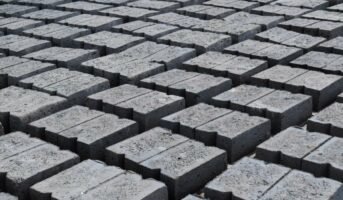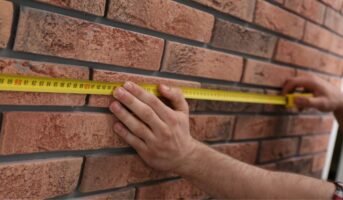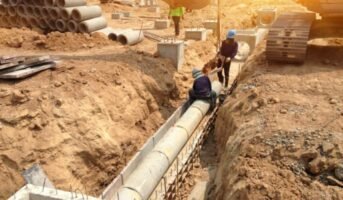When it comes to building materials, the first thing that comes to mind is bricks. These rectangular structural units are the most crucial component of any building. Due to their strength, adaptability and wide usage over time, bricks remain the most preferred material for construction projects. However, it is not as simple as it seems. These building blocks are available in various types and forms and it is important to choose the right one that suits your needs. Here is a brief guide to the types of bricks available in the market for your perusal.
Properties of bricks
So why are bricks so preferred, after all? Let’s have a look at the properties that make them special.
Composition
Bricks are made of materials such as clay or sand that are easy to shape and work with. These materials are shaped into blocks and hardened by being fired in a kiln or dried in the sun.
Durability
The most desirable characteristic of bricks lies in their durability and strength. Not only do they ensure a strong structure for the building, but are also resistant to harsh weather conditions and fire.
Variety
Bricks are available in various types and differ according to their size and material composition. The average size of a brick is 8” x 4” x 2.25” but might vary a little from region to region. Some common types of bricks include clay bricks, concrete bricks and engineered bricks, each used for different purposes.
Insulation
The thermal insulation properties of bricks provide optimal temperature control in the indoor environment. It helps in keeping the space cool in warm weather and warm when it’s cold outside.
Environmental sustainability
Bricks are made of environmentally friendly materials. Moreover, their longevity and recyclable properties make them a sustainable choice of construction material.
See also: How to clean bricks?
Brick types according to composition
Let us now look at and compare the various types of bricks based on their material composition:
| Type | Properties | Applications | Price range per piece |
| Clay bricks | Most common type of bricks that are made of clay, water and shale, shaped and dried in a fire kiln. Known for their durability and insulation properties. | Load-bearing walls, exterior walls, pavements, chimney, facades | Rs 4 – 40 |
| Concrete bricks | Made of cement, sand, aggregate and water and shaped using special moulds. Known for their superior moisture resisting properties. | Structural walls, facades, pavements, landscaping and detailing, fireproofing, soundproofing | Rs 10 – 40 |
| Calcium silicate/sand lime bricks | These are composed of sand, lime and fly ash under high pressure chemical conditions. They offer great insulation and load bearing properties. | Industrial buildings and structures, fireplaces, facade detailing | Rs 15 – 50 |
| Fly ash bricks | These are made by mixing coal combustion residue with cement. They are eco-friendly, lightweight and provide excellent thermal insulation. | Load-bearing walls, paving, interior and exterior walls, thermal insulation | Rs 6 – 20 |
| Magnesia bricks | These are composed of magnesium oxide and provide superior resistance against corrosion and thermal shock. | Steel, cement, glass and metal industries, incinerators, power plants | Rs 1500 – 3000 |
| Rammed earth bricks | These are made by a process of compaction of earth, clay, sand and gravel into moulds. These are durable and eco- friendly. | Residential and commercial buildings, interior and exterior walls, warehouses, factories | Rs 800 – 2500 (per sq area) |
See also: What are laterite bricks?
Brick types according to grade
Bricks are also classified according to quality and it is important to choose wisely.
| Types | Properties | Applications | Average price per piece |
| First class bricks | These are uniform in shape and have smooth finishing and edges. High in compressive strength and resistant to moisture. | Load-bearing structures, exterior walls with exposed brickwork | Rs 5 – 12 |
| Second class bricks | Might have minor irregularities in appearance but no difference in strength and durability. | Inner layer of walls, foundational structures | Rs 3 – 8 |
| Third class bricks | Largely irregular in appearance, lower strength and high rate of water absorption. | Non-load bearing walls, filling material | Rs 2 – 5 |
| Overburnt/jhama bricks | These bricks have undergone excessive firing in kilns and have a dark, irregular appearance. High strength but rough in appearance. | Non-structural walls, road construction, filling material | Rs 6 – 15 |
| Underburnt/khoa bricks | These bricks are the ones that do not receive adequate firing and remain soft and porous. They are very weak and easily absorb water. | Temporary walls, filling material, decorative applications | Rs 5 – 7 |
| Perforated bricks | These bricks have holes across the surface area, making them lightweight and improving insulation. | Partition walls, light structures | Rs 6 – 15 |
FAQs
Why is it important to choose the right type of brick?
Choosing the right type of brick that suits your needs is important for the safety and financial considerations of the construction process.
Which is the most common type of brick used for construction?
Clay bricks are most commonly used for construction.
What are the different grades of bricks available?
First class, second class, third class, jhama, khoa and perforated are the different grading qualities for bricks.
What is the advantage of choosing a lower-quality brick?
Lower quality bricks are used for non-heavy-duty structural applications such as filling material as it helps in cost cutting.
Which types of bricks are used for industrial applications?
Magnesia bricks are generally used for industrial applications due to their corrosion resistance.
Which is better - clay bricks or concrete bricks?
Both clay and concrete bricks are commonly used in construction. However, clay bricks are slightly more durable than concrete bricks.
What is the difference between clay bricks and rammed earth bricks?
While clay bricks are composed largely of clay, earth-rammed bricks are made by mixing and compaction of clay, sand and gravel.
| Got any questions or point of view on our article? We would love to hear from you. Write to our Editor-in-Chief Jhumur Ghosh at [email protected] |

Riddhi Chatterji is currently pursuing a master’s degree in English literature from University of Delhi. Her meticulous attention to detail and the desire to make a learning experience out of every opportunity has allowed her to work with different forms of textual content for digital platforms, ranging from social media to news desks. When not working or studying , you can find her with her head buried in a book, discovering new music and movies, or out and about exploring the city on the metro.











